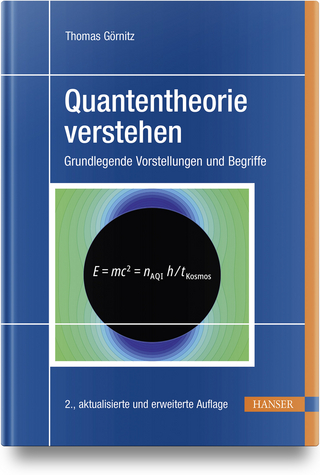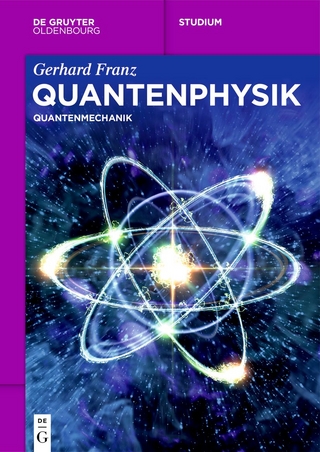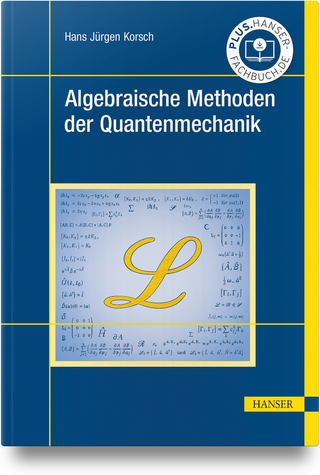
Quantum Mechanics for Scientists and Engineers
Cambridge University Press (Verlag)
978-0-521-89783-9 (ISBN)
- Lieferbar (Termin unbekannt)
- Versandkostenfrei innerhalb Deutschlands
- Auch auf Rechnung
- Verfügbarkeit in der Filiale vor Ort prüfen
- Artikel merken
If you need a book that relates the core principles of quantum mechanics to modern applications in engineering, physics, and nanotechnology, this is it. Students will appreciate the book's applied emphasis, which illustrates theoretical concepts with examples of nanostructured materials, optics, and semiconductor devices. The many worked examples and more than 160 homework problems help students to problem solve and to practise applications of theory. Without assuming a prior knowledge of high-level physics or classical mechanics, the text introduces Schrödinger's equation, operators, and approximation methods. Systems, including the hydrogen atom and crystalline materials, are analyzed in detail. More advanced subjects, such as density matrices, quantum optics, and quantum information, are also covered. Practical applications and algorithms for the computational analysis of simple structures make this an ideal introduction to quantum mechanics for students of engineering, physics, nanotechnology, and other disciplines. Additional resources available from www.cambridge.org/9780521897839.
David A. B. Miller received the B.Sc. degree from St Andrews University, and, in 1979, the Ph.D. degree from Heriot-Watt University, both in Physics. He was with Bell Laboratories from 1981 to 1996, as a department head from 1987, latterly of the Advanced Photonics Research Department. He is currently the W. M. Keck Professor of Electrical Engineering, the Director of the Solid State and Photonics Laboratory, and a Co-Director of the Stanford Photonics Research Center at Stanford University, Stanford, California, USA. His research interests include physics and devices in nanophotonics, nanometallics, and quantum-well optoelectronics, and fundamentals and applications of optics in information sensing, switching, and processing. He has published more than 200 scientific papers, holds 62 patents, is a Fellow of OSA, IEEE, APS, and the Royal Societies of Edinburgh and London, holds honorary degrees from the Vrije Universiteit Brussel and Heriot-Watt University, and has received numerous awards.
How to use this book; 1. Introduction; 2. Waves and quantum mechanics – Schrödinger's equation; 3. The time-dependent Schrödinger equation; 4. Functions and operators; 5. Operators and quantum mechanics; 6. Approximation methods in quantum mechanics; 7. Time-dependent perturbation theory; 8. Quantum mechanics in crystalline materials; 9. Angular momentum; 10. The hydrogen atom; 11. Methods for one-dimensional problems; 12. Spin; 13. Identical particles; 14. The density matrix; 15. Harmonic oscillators and photons; 16. Fermion operators; 17. Interaction of different kinds of particles; 18. Quantum information; 19. Interpretation of quantum mechanics; Appendices: A. Background mathematics; B. Background physics; C. Vector calculus; D. Maxwell's equations and electromagnetism; E. Perturbing Hamiltonian for optical absorption; F. Early history of quantum mechanics; G. Some useful mathematical formulae; H. Greek alphabet; I. Fundamental constants; Bibliography; Memorization list.
| Erscheint lt. Verlag | 21.4.2008 |
|---|---|
| Zusatzinfo | 73 Line drawings, unspecified |
| Verlagsort | Cambridge |
| Sprache | englisch |
| Maße | 183 x 260 mm |
| Gewicht | 1150 g |
| Themenwelt | Naturwissenschaften ► Physik / Astronomie ► Quantenphysik |
| ISBN-10 | 0-521-89783-1 / 0521897831 |
| ISBN-13 | 978-0-521-89783-9 / 9780521897839 |
| Zustand | Neuware |
| Haben Sie eine Frage zum Produkt? |
aus dem Bereich


